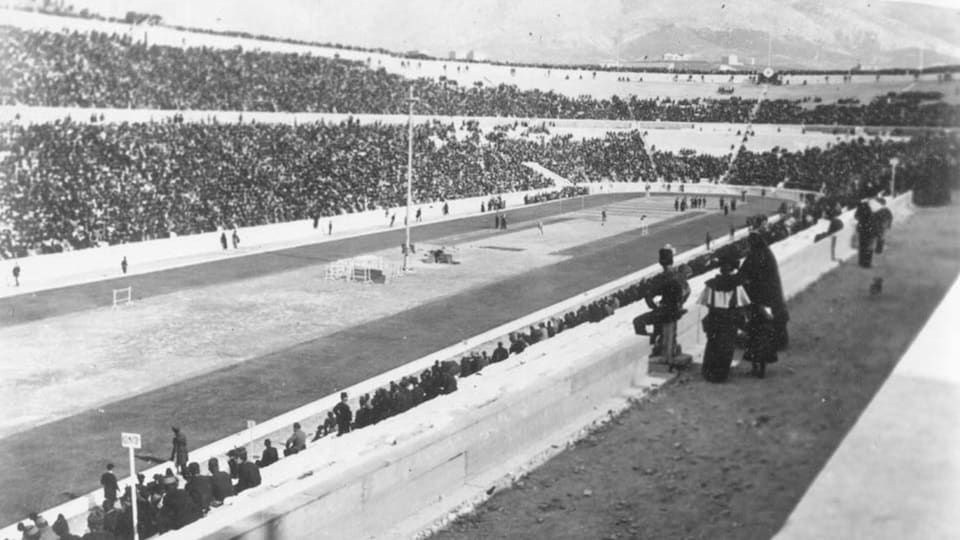Top reasons why the Athens 1896 Olympics were important for modern sport
The first modern Olympic Games took place in the Greek capital Athens in 1896, setting the stage for some firsts that are still relevant today.

The first modern Olympic Games took place in Athens in 1896 two years after Pierre Baron de Coubertin formed the International Olympic Committee in Paris.
There had already been local attempts to revive the Olympics in various countries, including Greece and Britain. De Coubertin had wanted the first Games to be in Paris, but in a nod to the Ancient Olympic Games, it was agreed that the Greek capital would play host, with Paris slated to host in 1900 alongside the Universal Exposition of that year.
With few similar modern-day competitions for the organisers to refer to, the Games of the I Olympiad were an impressive undertaking that saw over 200 athletes from 14 countries take part.
Athens was also the site of a number of firsts that still have resonance and importance now, 125 years later. Here we take a look at some of the facts you may not know about the 1896 Games and their relevance in 2021.
1. The marathon was introduced
Did you know that the marathon was first introduced at Athens 1896? Although based on the Greek legend of Pheidippides, who is said to have run 40 km from Marathon to Athens in around 490 BC, there was no race commemorating this story in any of the Ancient Games.
At Athens 1896, the first competitive Olympic marathon was run over that distance, and was won by Spyridon "Spyros" Louis of the host country, who immediately became a national hero. In fact, Louis had not even won his Greek selection race, placing only fifth. Kharilaos Vasilakos, the silver medallist, had won the first recorded modern marathon, two weeks before Louis's trial race.
In the early years, there was no set distance for the marathon, with most races around 40 km or 25 miles in length. It was standardised to the present-day 42.195 km (26.2 miles), which was the distance used at the London 1908 Olympic Games, in 1921.
The Athens Olympic Stadium, used in the 2004 Games, was named for Louis. Women first competed in an Olympic marathon at Los Angeles 1984.
2. The sprint crouch start
The athletics track races were held around a tight oval-shaped track at the Panathenaic Stadium, with a negative effect on times.
At the time of the Games, the quickest 100m time recorded was 10.8 seconds, but winner Thomas Burke completed the final in 12.0 seconds (he had set the first Olympic record of 11.8 seconds in the semi-final).
Intriguingly, Burke was reportedly the only one of the athletes to start from a crouch position with one knee on the ground, similar to how athletes of today begin.
The rest began from a standing start. That also helped Burke win the 400 metres.
It turns out starting from the crouch is best for sprints after all.
3. Swimming was held in open water
All four swimming events – the 100m freestyle, 500m freestyle, 1200m freestyle, and sailors' freestyle – were held in open water, in the Mediterranean Sea.
Alfréd Hajós of Hungary won the 100m and 1200m events in the freezing cold waters of the Bay of Zea, and would have taken part in the 500m race too had it not taken place between his two other events. He was the youngest champion of the Games.
Swimming events continued to be held in the open water for at least three more Olympics – in the Seine at Paris 1900, an artificial lake in a park at St Louis 1904, and in Stockholm Harbour in 1912.
However, open-water swimming would become an Olympic discipline in its own right at Beijing 2008, when the first two 10 km marathon swims took place. Since then, it has become a regular staple on the Olympic calendar.
Hajós would go on to become a renowned architect, winning an Olympic silver medal in 1924 in that field; a number of stadiums are named after him in Hungary.
4. Goddess Nike and the medal design
Would you believe it, the winners of each event in Athens did not receive gold medals?
They were each awarded silver medals, as well as an olive branch. Runners-up received copper medals and laurel branches.
The medals included a depiction of Zeus holding a globe with a winged Nike (the goddess of victory) on it.
Nike, holding a palm in her left hand and a crown in her right, has been included on every summer Olympic medal design since the Amsterdam 1928 Games.
Gold, silver, and bronze medals for the first three finishers in each event were eventually introduced at the third modern Olympics, in St Louis, Missouri, USA, in 1904.
5. The Olympic Anthem was written for the Games
In the first few decades of the modern Olympic Games, each organising committee arranged for an anthem to represent its own Games.
Spiros Samaras and Kostis Palamas wrote the first Olympic Anthem for Athens 1896, chosen by the inaugural president of the IOC, Demetrius Vikelas.
For the next 60 years, each Olympic Games had a hymn written for it until the 54th IOC Session decided in 1958 to use the Samaras/Palamas composition as the official Olympic Anthem.
First performed in this capacity at the 1960 Winter Olympics in California, it can now be heard at least two times at every Games, once during the Opening Ceremony and again at the Closing Ceremony. It is also this anthem that plays at medal ceremonies when an Independent Athlete wins gold.
(Top photo: The Panathenaic Stadium during the Athens 1896 Olympic Games / Photo: IOC)

